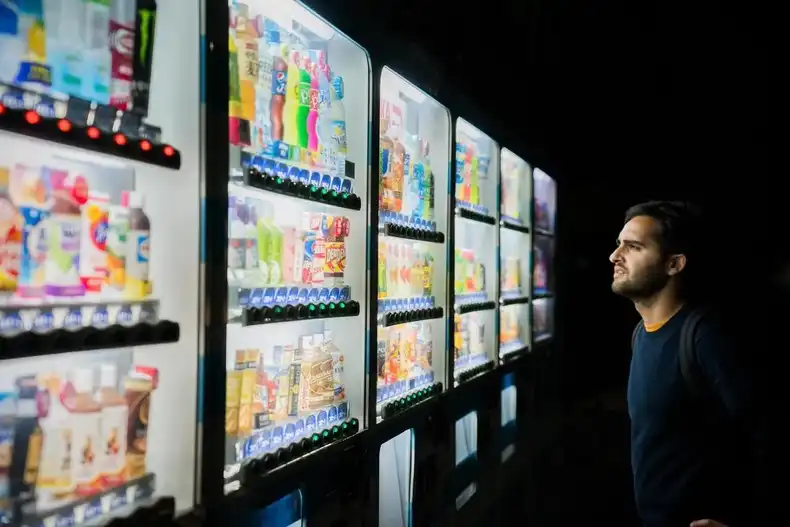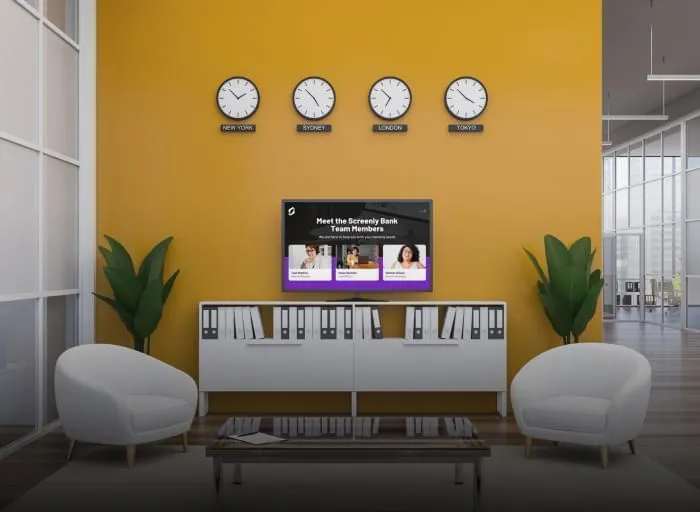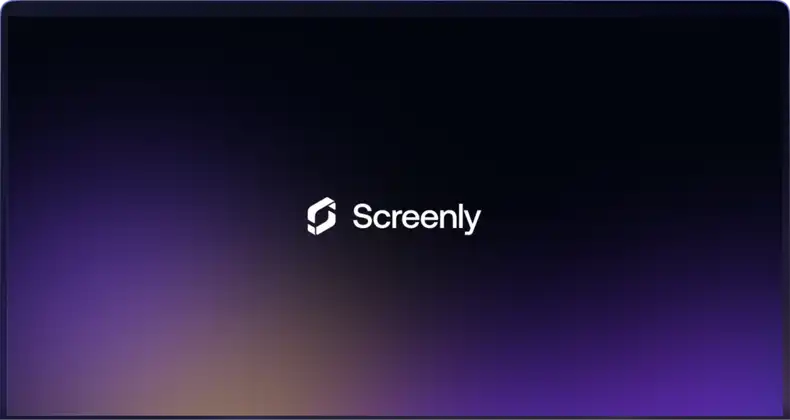In the past few decades, digitalization and the internet have upended many industries. New technology has allowed entrepreneurs to reduce inefficiencies, reimagine workflows, introduce new products, and create entire markets from scratch. However, some industries have been affected by these changes less than others. One sector that is ripe for disruption by technological innovation is the vending machine industry. Below we will explore this opportunity for innovation. Specifically, we will discuss how you can use digital sign technology to improve and grow your vending machine business.
Benefits of using digital signs with vending machines
Digital signs provide an excellent medium through which you can make your vending machines come alive. Most vending machines have underutilized space on the two sides adjacent to the front of the machine. The front exterior of the machine is a plate of glass that customers use to view the products. However, the other two sides are either empty or wrapped in a printed sign. This scenario is less than ideal, as these two sides can be much more engaging interfaces for customers.
Vending machine operators can set up digital signs on each of these two sides. If the back of the machine is not against a wall, operators can set up digital signs on three sides of the machine. This setup allows machine operators to transform their vending machine into a multi-directional, attention-grabbing digital display. This enhancement is beneficial to your business as it helps attract more customers to your vending machine. Bright digital signs with a slideshow of images or video content will capture customer attention and attract customers to your vending machine.
Digital signs are also useful for machine operators as the devices can turn your vending machine into much more than a drink and snack dispenser. With a digital sign or multiple digital signs, machine operators can serve third-party advertisements to nearby foot traffic. This ability enables vending machines to become an innovative advertising platform rather than just a snack machine. Vending machine snack foods are notoriously low-margin, and digital signs allow machine operators to capture a high-margin revenue stream from advertising income.
What do I need to launch a digital sign on my vending machine
You will need a few components to set up and manage your vending machine’s digital signs. First, you will need a display screen that fits the dimensions of your vending machine. Note that you do not necessarily need to place your digital signs your vending machine’s sides. Depending on your existing vending machine’s position, a digital sign can work well as a stand-alone screen. The screen can sit next to or on top of the vending machine. You will need a commercial-grade screen with thick, protective glass and that is bright enough for customers to see during daytime hours.
Next, you’re going to need a media player for your digital sign. A media player stores, processes, and renders content to your digital sign. When you select your media player, you’ll want to make sure that it can display high resolution, 1080p HD images and videos. You should also make sure that the media player can display this content vertically, as this orientation works best with the dimensions of most vending machines. Lastly, you should make sure that the media player is low cost so that you can deploy multiple digital signs across numerous vending machines. The Screenly Player meets each of those requirements. The Screenly Player contains a Raspberry Pi minicomputer, and you can purchase it together with all necessary connection cables on Amazon.
You will also need management software for your digital sign media player. Great digital sign management software allows you to change, update, and schedule your digital sign content from anywhere using a web interface on your laptop. This feature enables users to avoid time-consuming trips to each media player whenever they want to make content changes. This feature is particularly important for digital signs in the vending machine industry, as an operator’s vending machines may be across a city. To learn more, check out Screenly’s digital signage management software.
Once you have your display screen, media player, and digital sign management software, you will need to mount the display onto your vending machine. This task is something you will want to be careful about to prevent damage to both your vending machine and your digital sign. You will need to ensure that your digital sign is secure enough to minimize the risk of theft. Our friends at SMRT1 Technologies, a company that integrates touchscreen interfaces with existing vending machines, are experts regarding connecting digital screens to vending machines. Read on to learn more about SMRT1 Technologies and how they may be useful for your business’s needs.
SMRT1 Technologies pushes the frontier of vending machine technology
SMRT1 Technologies allows operators to quickly and affordably transform their existing vending machines into state-of-the-art retail channels. With SMRT1 Technologies, machine operators can install a touchscreen interface for a vending machine in under an hour. This interface equips a vending machine with a dynamic display that companies can use to increase sales and delight customers.
With a touchscreen display from SMRT1 Technologies, a vending machine becomes much more than snack food and metal coils. Vending machine operators can then present customers with unique media experiences. For example, customers can opt to watch an advertisement from a local business in exchange for a free drink from the vending machine. Additionally, customers can read more information on the vending machine’s contents. For snack food, this additional information can be nutrition content. With technology products, this additional information can be product specifications and compatibility information.
Each touchscreen costs about US $4,500, and non-touch digital sign displays cost between US $2,500 and US $3,000. This price point is much lower than many existing touchscreen vending solutions requiring operators to purchase a new screen and a new vending machine. Using an existing vending machine is a crucial differentiator between SMRT1 Technologies and other touchscreen solutions. If machine operators must scrap their current vending machines to implement touchscreen technology, the economics do not make sense and operators lose out on the advantages of vending machine digital signage.
New vending machine integrations
Touch screens from SMRT1 Technologies run off of a powerful Intel processor. This processing power allows SMRT1 Technologies to connect their vending machine interfaces with various data inputs and sensors. Vending machines can then use this data to produce a fantastic experience for customers.
For example, Bluetooth and NFC readers can track the unique IDs of nearby customers. If a customer purchases an item at a vending machine, the operator’s backend can associate this data with the unique ID of the customer’s Bluetooth or NFC enabled device. When the customer walks by a vending machine from the same operator, this second vending machine can display an advertisement for the user’s previously purchased product. Of course, laws on storing and tracking the unique IDs of users vary by locality. However, this ability for vending machines to target advertisements to a specific customer is both useful and exciting.
Another interesting use case involves integrating eye-gaze technology into the vending machine to provide customized user experiences. Eye-gaze technology can detect what parts of the screen the customer looks at the most. Areas of the screen are, of course, associated with a particular product in the vending machine. Vending machines can capture this eye-gaze data to provide a custom experience for each customer. For example, if users focus on a particular product on the screen, the vending machine can automatically display user testimonials for this product.
For enhanced vending machine experiences, operators must ensure that their non-touch digital signs can also integrate with data from sensors and databases associated with each vending machine. When selecting your digital signage management software, check to see if the management software allows API integrations for vending machines. This feature enables your digital sign content to change automatically based on predetermined input parameters. To learn more about API integrations with Screenly, check out our page on digital signage APIs.
What is the future of vending machine technology
Screenly and SMRT1 Technologies are working to enable the next evolution of vending machines. Instead of vending machines being a uni-dimensional interface where customers can only purchase products, software and hardware integrations will allow vending machines to become interactive and dynamic customer acquisition channels. SMRT1 Technologies is building its platform to be the “WordPress of vending machines.” The goal of SMRT1 Technologies is to provide vending software and hardware that can offer a variety of custom plug-and-play solutions for the needs of any vending machine operator. With the help of API digital signage from Screenly, SMRT1 hopes to build a distributed advertising network that vending machine operators. By displaying ads, operators can add advertising revenue to their business’s revenue streams.
I want a digital sign for my vending machine. How do I get one?
To get started with digital signs and touch screen for vending machines, check out Screenly’s digital signage and SMRT1 Technologies’ vending machine solutions. Next, get in touch with Screenly and SMRT1 Technologies to learn more about how we can supercharge your vending machines. Ready to get started with Screenly now? Sign up for 14-day Screenly free trial in seconds.




